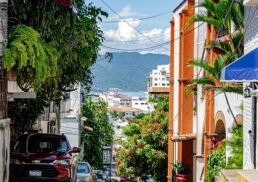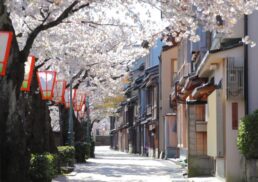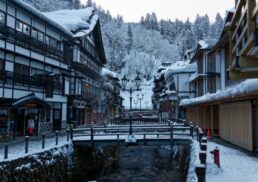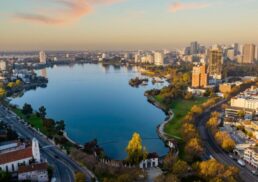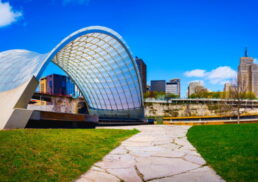Hiroshima and Nagasaki today are vibrant cities of hope and remembrance. Rising from World War II’s devastation, they now thrive economically and culturally while honoring their past through significant memorials. This article delves into their transformation and enduring legacy.
Table of Contents
Key Takeaways
Hiroshima and Nagasaki have transformed into modern, thriving cities while dedicating significant efforts towards remembrance and advocacy for global peace.
The Hiroshima Peace Memorial Park and Museum, and the Atomic Bomb Dome serve as poignant reminders of the past and symbols of resilience and hope for a nuclear-free world.
Survivors’ stories and annual remembrance ceremonies play a crucial role in promoting peace and educating future generations about the horrors of nuclear warfare.
Hiroshima Today: A City Rebuilt
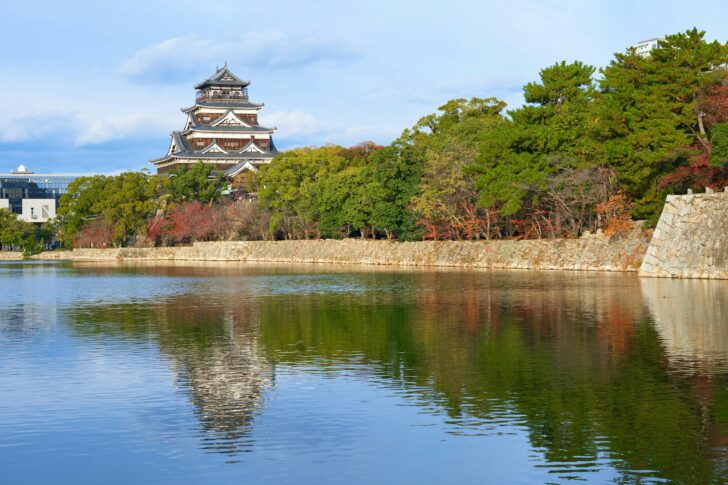
Hiroshima, once synonymous with devastation, has risen like a phoenix from the ashes. Today, it stands as a prosperous manufacturing hub, boasting industries ranging from shipbuilding to cutting-edge sectors like electronic parts. This economic transformation has turned Hiroshima into a well-balanced city with a vibrant population of over 1.1 million people.
The cultural and artistic resources in Hiroshima are as diverse as its industries. The city is home to professional sports teams, the renowned Hiroshima Symphony Orchestra, and a variety of festivals that celebrate its rich heritage. Tourist attractions abound, drawing over 10 million visitors annually for 15 consecutive years since 2005. These visitors are not only captivated by the city’s historical significance but also by its thriving arts scene and culinary delights, including the famous Hiroshima lemons.
Hiroshima’s residents have launched a forward-thinking project, ‘Hiroshima 2045: City of Peace and Creativity’, in 1995, aspiring to shape a cityscape that harmoniously blends peace and innovation. Hiroshima’s nickname, the City of Water, due to its six rivers, including the Motoyasu River, crisscrossing the landscape, adds to its serene yet dynamic charm.
Nagasaki’s Modern Landscape
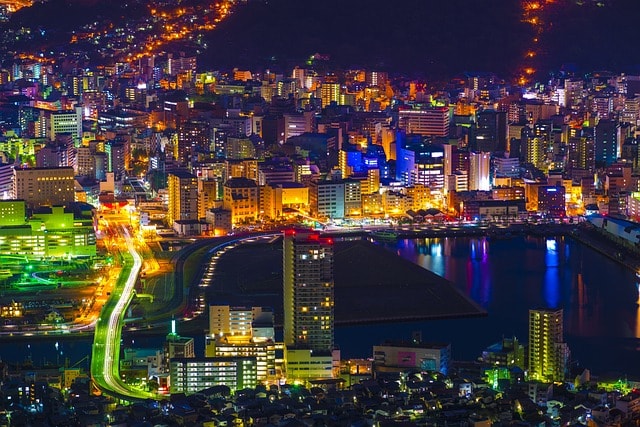
Nagasaki, like Hiroshima, faced unimaginable devastation during World War II. Today, it stands as a testament to human resilience and ingenuity. The city has undergone significant recovery and development, focusing on key industries and technological advancements in infrastructure. This strategic rebuilding has not only restored Nagasaki but has also propelled it into a modern era of economic stability.
The vibrant cultural scene in Nagasaki adds another layer to its rich tapestry. The city boasts important landmarks that attract both tourists and locals, creating a dynamic blend of history and modernity. Some of these landmarks include:
Nagasaki Peace Park and Atomic Bomb Museum
Glover Garden
Oura Church
Nagasaki Chinatown
Dejima
These landmarks are not just reminders of the past but also symbols of Nagasaki’s commitment to a peaceful future.
Efforts to balance preservation of Nagasaki’s history with embracing progress have characterized its recovery journey. The city’s transformation from ground zero to a bustling urban center is a powerful narrative of change and hope. This journey is a reflection of the broader story of Hiroshima and Nagasaki, where the echoes of the past continue to shape their present and future.
The Hiroshima Peace Memorial Park and Museum
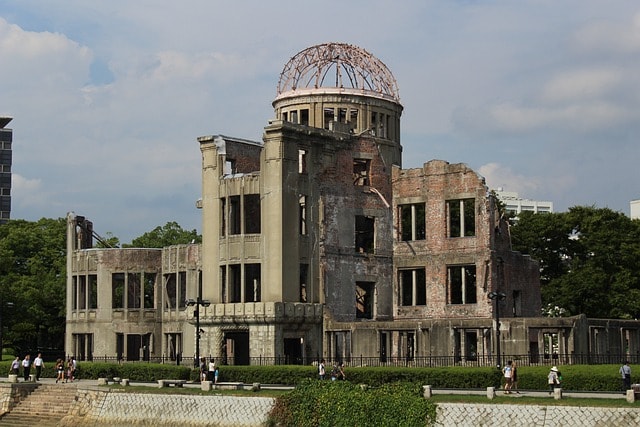
The Hiroshima Peace Memorial Park and Museum, designed by the visionary architect Kenzo Tange, stand as poignant reminders of the destructive power of nuclear weapons and the enduring hope for world peace. Completed in 1955, the park covers 42.7 hectares and is situated where the city’s central shopping district once was, surrounding the preserved Genbaku Dome.
The park is a sanctuary of reflection and remembrance, featuring numerous monuments dedicated to peace. Among these is a place for prayer for atomic bomb victims, serving as a solemn reminder of the lives lost and the resilience of those who survived. Housed within the park, the Hiroshima Peace Memorial Museum is instrumental in enlightening the public about the bombing’s horrors and the significance of advocating for peace. It offers daily lectures by hibakusha (atomic bomb survivors), providing firsthand accounts of their experiences.
A notable demonstration of international unity was in 2023 when G-7 leaders collectively visited the Hiroshima Peace Memorial Museum, highlighting their dedication to a nuclear-free world. This visit highlights the global recognition of Hiroshima’s message of peace and the universal desire to prevent such tragedies from ever occurring again.
The Atomic Bomb Dome: A Symbol of Resilience

Standing tall amidst the modern cityscape of Hiroshima, the Atomic Bomb Dome is a powerful symbol of resilience and a UNESCO World Heritage site. This structure, also known as the Hiroshima Peace Memorial, is the only building left standing near the hypocenter of the nuclear bomb explosion on August 6, 1945. Preserved in the same state as immediately after the bombing, it serves as a stark reminder of the destructive power of nuclear weapons and the enduring hope for world peace.
Preserving the dome with minimal reinforcement to keep its original state bears witness to the efforts of Hiroshima’s inhabitants and the worldwide community. It stands as a place for prayer for atomic bomb victims and a symbol of the city’s commitment to promoting permanent world peace. The Atomic Bomb Dome’s haunting silhouette against the sky is a poignant reminder of the past and a call to action for a future without nuclear weapons.
The dome’s inclusion as a UNESCO World Heritage site in 1996 further solidifies its status as an international symbol of peace and resilience. As visitors walk through the Hiroshima Peace Memorial Park and gaze upon the dome, they are reminded of the profound impact of the atomic bomb and the enduring spirit of those who survived and rebuilt.
Nagasaki Peace Park and Atomic Bomb Museum
Nagasaki Peace Park, situated on a hill north of the atomic bomb blast’s hypocenter, is a serene and reflective space dedicated to the memory of the bombing’s victims and the promotion of peace. The park features the impressive 9.7-meter-high Peace Statue, crafted by Nagasaki native Seibou Kitamura, symbolizing the citizens’ wish for peace. This statue, with its arm pointed to the sky and another extended horizontally, embodies the dual message of warning and hope.
The Peace Memorial Park in Hiroshima features several distinctive monuments, including:
The Atomic Bomb Dome, a UNESCO World Heritage Site that stands as a symbol of the devastating impact of nuclear weapons
The Children’s Peace Monument, dedicated to the thousands of children who died as a result of the bombing
The Fountain of Peace, erected in memory of a girl who frantically sought water post-bombing
A zone of world peace symbols, displaying monuments contributed by various nations, emphasizing the global commitment to peace
These monuments serve as powerful reminders of the human suffering caused by nuclear weapons and the necessity of striving for a world of peace.
The Nagasaki Atomic Bomb Museum complements the Peace Park by providing an in-depth look at the events of August 9, 1945, and the aftermath. Through powerful exhibits and personal stories, the museum educates visitors about the horrors of the bombing and the resilience of the Nagasaki community. Together, the Peace Park and Museum serve as vital educational and memorial sites, fostering a deeper understanding of the past and a commitment to a peaceful future.
Residual Radiation and Its Long-term Effects
Presently, the residual radiation levels in Hiroshima and Nagasaki are almost similar to global background radiation, largely due to the decay of induced radioactivity and atmospheric tests conducted in the 1950s and 1960s. Most of the induced radioactivity, emitted during the bombings, decayed within a few days after the explosions, allowing the cities to rebuild and thrive.
However, the long-term effects of radiation exposure on survivors have been profound. The Radiation Effects Research Foundation estimates an attributable risk of 46% for leukemia among atomic bomb survivors. Studies have also shown increases in small head size and mental disability in individuals exposed in utero, highlighting the devastating impact of radiation on developing bodies. Fortunately, no radiation-related excess of disease has been observed so far in children conceived after the bombings by survivors.
These long-term health effects underscore the horrific consequences of nuclear weapons and the importance of global efforts to prevent their use. The stories of survivors and the scientific research on radiation effects continue to inform and inspire advocacy for a nuclear-free world.
Survivors’ Stories and Advocacy for Peace
The hibakusha, namely atomic bomb survivors, hold a pivotal part in advocating for peace and recounting their terrifying experiences. Tadashi Okamoto, for instance, was just 17 months old during the bombing of Hiroshima. His house was destroyed, and he suffered severe injuries that affect him to this day. Such personal stories bring to life the immense suffering endured by the survivors and the long-lasting impact of the bombings.
Another poignant story is that of Sadako Sasaki, a young Hiroshima survivor diagnosed with leukemia. Her story, immortalized in the book “Sadako and the Thousand Paper Cranes,” has become a symbol of hope and peace. Hibakusha gather at Hiroshima’s Hachidori-sha Social Book Cafe on the 6th, 16th, and 26th of every month to share their stories, ensuring that the memory of August 6, 1945, is never forgotten.
In addition to local efforts, survivors travel with organizations like Peace Boat, part of the International Campaign to Abolish Nuclear Weapons (ICAN), to share their stories globally and advocate for nuclear disarmament. Initiatives like the Hiroshima Organization for Global Peace (HOPE) work with hibakusha to transform their pain into powerful advocacy for peace. These efforts highlight the resilience of the survivors and their unwavering commitment to a world free from nuclear weapons.
Annual Remembrance Ceremonies
Hiroshima and Nagasaki conduct solemn annual remembrance ceremonies in tribute to the victims of the atomic bombings. On August 6, Hiroshima observes a moment of silence at 8:15 am, the exact time the bomb was dropped, with church bells ringing to mark the beginning of a day of remembrance ceremonies. Notable attendees often include Japanese political leaders, international dignitaries, and representatives from various countries, all gathered to promote peace and nuclear disarmament through their speeches.
Similarly, on August 9, Nagasaki holds a peace memorial ceremony in front of the Peace Statue, featuring speeches and moments of reflection. These annual events serve as powerful reminders of the past and reinforce the global commitment to preventing such tragedies in the future. They also provide a platform for survivors and advocates to share their messages of peace and hope.
International Efforts and Visits
Global endeavors and visits to Hiroshima and Nagasaki highlight the worldwide dedication to nuclear disarmament and peace. The International Campaign to Abolish Nuclear Weapons (ICAN) winning the Nobel Peace Prize in 2017 is a testament to the tireless work of advocates worldwide. Japanese Prime Minister Fumio Kishida emphasized nuclear disarmament during the 2023 G-7 summit, held in Hiroshima, highlighting the ongoing global nuclear threats.
During the summit in Japan, world leaders, including French President Emmanuel Macron, British Prime Minister Rishi Sunak, and Canadian Prime Minister Justin Trudeau, made their first-ever visits to Hiroshima as incumbent leaders. They listened to firsthand accounts from Keiko Ogura, an 85-year-old atomic bomb survivor, further highlighting the importance of remembering the past to build a peaceful future.
Hiroshima and Nagasaki in Popular Culture
A considerable number of popular culture works draw inspiration from the Hiroshima and Nagasaki bombings, contemplating the deep influence these events had on humanity. The book “Hiroshima mon amour” by Marguerite Duras and its related film include documentary footage of the aftermath, providing a poignant narrative of loss and remembrance. Similarly, the graphic novel “Town of Evening Calm, Country of Cherry Blossoms” by Fumiyo Kōno tells the story of a family’s life after the Hiroshima bombing.
Another notable work is the manga “Barefoot Gen” by Keiji Nakazawa, an autobiographical account of the Hiroshima bombing and its aftermath. The film “Black Rain,” directed by Shohei Imamura, is based on Masuji Ibuse’s novel and depicts the harrowing experiences of Hiroshima’s residents after the bombing. These creative works serve as powerful reminders of the bombings’ impact and the enduring human spirit.
Music has also played a role in commemorating the events. Krzysztof Penderecki’s “Threnody to the Victims of Hiroshima,” written in 1960, and the song “Enola Gay” by Orchestral Manoeuvres in the Dark, about the B-29 bomber that delivered the atomic bomb, are poignant tributes to the victims and survivors. These cultural representations help keep the memory of Hiroshima and Nagasaki alive, ensuring that future generations understand the gravity of these events.
Summary
In summary, Hiroshima and Nagasaki today stand as powerful symbols of resilience and hope. Their transformation from sites of unimaginable devastation to thriving, peaceful cities is a testament to the indomitable human spirit. The economic revival, cultural richness, and continued efforts to remember and advocate for peace highlight the enduring legacy of these cities.
As we reflect on the stories of survivors, the significance of memorials, and the global commitment to nuclear disarmament, it is clear that the lessons of Hiroshima and Nagasaki remain profoundly relevant. Let us honor the past by working towards a future where such tragedies never occur again, fostering a world of peace and understanding.
Frequently Asked Questions
What industries contribute to Hiroshima’s economy today?
Hiroshima’s economy today is contributed to by a range of industries, including shipbuilding and electronic parts manufacturing. This has led to the city’s evolution into a prosperous manufacturing hub.
How does Nagasaki commemorate the victims of the atomic bombing?
Nagasaki commemorates the victims of the atomic bombing by holding an annual peace memorial ceremony on August 9 in front of the Peace Statue, which includes speeches and moments of reflection. This ceremony serves as an important event to remember and honor the victims of this tragic event.
What is the significance of the Hiroshima Peace Memorial Park and Museum?
The Hiroshima Peace Memorial Park and Museum symbolize the devastating impact of nuclear weapons and advocate for global peace through various monuments and a space for remembering the victims of the atomic bomb. It is a solemn reminder of the consequences of nuclear warfare.
Are there still high levels of radiation in Hiroshima and Nagasaki?
No, the level of radioactivity in Hiroshima and Nagasaki today is nearly indistinguishable from the global background radiation, due to the decay of induced radioactivity and atmospheric tests in the 1950s and 1960s.
How have Hiroshima and Nagasaki been represented in popular culture?
Hiroshima and Nagasaki have been represented in popular culture through various works including books, films, and music, such as “Hiroshima mon amour,” “Barefoot Gen,” and “Enola Gay.”


